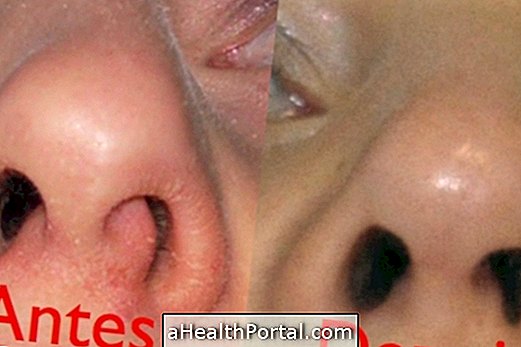The septum deviation corresponds to the alteration of the position of the wall separating the nostrils, the septum, which may be due to blows to the nose, local inflammation or present from birth, and which mainly cause difficulty in breathing.
Thus, people who have deviated nasal septum should consult an otolaryngologist if it is disrupting the respiratory process and the person's quality of life, and then the need for surgical correction of the problem is evaluated.
Surgery for septum diversion is known as septoplasty, is done under local or general anesthesia and lasts for about 2 hours.

How is the surgery done
Septoplasty, which is surgery to correct septum deviation, is recommended by the otorhinolaryngologist when the deviation is too large and compromises the person's breathing. Usually this procedure is done after the end of adolescence, since it is the time when the bones of the face stop growing.
The surgery is done under general or local anesthesia and consists of a cut in the nose to peel off the skin that covers it, followed by correction of the septum from the removal of excess cartilage or part of the bone structure and repositioning of the skin. During the surgery the doctor makes use of a small device with a camera to better analyze the bone structure of the person's nose to make the procedure less invasive.
The surgery lasts on average 2 hours and the person can be discharged on the same day, depending on the time the surgery was performed, or the next day.
Care after surgery
Recovering from nasal septum deviation surgery takes about 1 week and during this time it is important to take some care, such as avoiding sun exposure, as it can lead to blemishes, avoid wearing glasses, change the dressing according to recommendation of the nursing team and make use of antibiotics recommended by the physician to avoid the occurrence of infections during the healing process.
It is also recommended to return to the doctor after 7 days for evaluation of the nose and the healing process.
Symptoms of deviated nasal septum
The main symptom of nasal septum deviation is the difficulty in breathing through the nose. In addition, other symptoms of septum deviation are:
- Headache or face;
- Bleeding from nose;
- Sleep apnea;
- Stuffy nose;
- Snoring;
- Excessive tiredness.
In congenital cases, the deviated nasal septum may not cause any symptoms and usually does not require treatment.




















